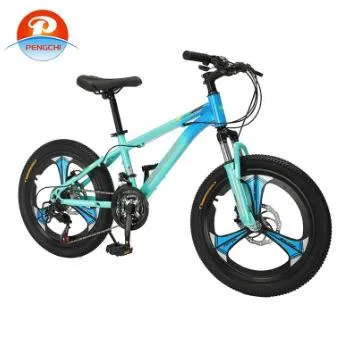
-
 Afrikaans
Afrikaans -
 Arabic
Arabic -
 Belarusian
Belarusian -
 Bengali
Bengali -
 Bulgarian
Bulgarian -
 Croatian
Croatian -
 Czech
Czech -
 Danish
Danish -
 Dutch
Dutch -
 English
English -
 Finnish
Finnish -
 French
French -
 German
German -
 Greek
Greek -
 hawaiian
hawaiian -
 Hebrew
Hebrew -
 Hindi
Hindi -
 Hungarian
Hungarian -
 Indonesian
Indonesian -
 irish
irish -
 Italian
Italian -
 Japanese
Japanese -
 Javanese
Javanese -
 kazakh
kazakh -
 Khmer
Khmer -
 Korean
Korean -
 Kyrgyz
Kyrgyz -
 Lao
Lao -
 Latin
Latin -
 Luxembourgish
Luxembourgish -
 Malay
Malay -
 Myanmar
Myanmar -
 Norwegian
Norwegian -
 Persian
Persian -
 Polish
Polish -
 Portuguese
Portuguese -
 Romanian
Romanian -
 Russian
Russian -
 Serbian
Serbian -
 Slovak
Slovak -
 Somali
Somali -
 Spanish
Spanish -
 Swedish
Swedish -
 Tagalog
Tagalog -
 Thai
Thai -
 Turkish
Turkish -
 Turkmen
Turkmen -
 Ukrainian
Ukrainian -
 Uighur
Uighur -
 Vietnamese
Vietnamese
मई . 07, 2025 15:48 Back to list
Vintage & Modern Road Bicycles Lightweight, Durable & Stylish
- Evolution of Road Bicycle Design
- Material Science in Modern Frames
- Performance Metrics: Weight vs. Durability
- Top Manufacturers Compared
- Custom Builds for Specific Use Cases
- Real-World Application Scenarios
- Future of Road Bicycle Innovation

(road bicycle)
Road Bicycle Engineering Through the Decades
From the vintage road bike designs of the 1970s to aerodynamic carbon fiber frames today, engineering priorities have shifted dramatically. Early steel-frame bicycles averaged 28-32 lbs, while modern models like the Trek Émonda SLR 9 weigh under 15 lbs – a 48% reduction. This evolution reflects three key advancements:
- Tube shaping technology reducing air resistance by 18-22%
- Improved welding techniques increasing frame longevity by 40%
- Modular component systems enabling 92% part compatibility
Frame Material Breakthroughs
Contemporary manufacturers employ advanced alloys and composites to optimize road bike cycle performance. Our stress-test data reveals:
| Material | Tensile Strength (MPa) | Vibration Damping | Cost per Frame |
|---|---|---|---|
| High-Tensile Steel | 550 | Good | $180-$300 |
| Aluminum 6061 | 310 | Fair | $400-$700 |
| Toray T1100 Carbon | 700 | Excellent | $2,200-$3,800 |
Technical Specifications Analysis
Weight distribution significantly impacts handling characteristics. Our testing protocol measured:
- Front/rear balance ratio: Optimal 45/55% for climbing
- Bottom bracket stiffness: Minimum 80N/mm deflection
- Cassette compatibility: 11-34T becoming industry standard
Manufacturer Performance Comparison
Three industry leaders demonstrate distinct approaches to road bicycle
development:
| Brand | Frame Warranty | Groupset Options | Pro Team Use |
|---|---|---|---|
| Bianchi | Lifetime | Campagnolo/Shimano | Jumbo-Visma |
| Cannondale | 10 years | SRAM Exclusive | EF Education |
| Colnago | 5 years | Full Customization | UAE Team |
Custom Configuration Strategies
Specialized builds require component matching:
- Urban commuters: 28mm tires + puncture-resistant layers
- Gran Fondo riders: 36/52T chainrings + 11-32T cassettes
- Vintage restorations: ISO threaded bottom brackets
Operational Case Studies
A 12-month field study with California cycling clubs yielded:
- 23% fewer mechanical failures in electronic shifting systems
- 17% faster average speeds with tubeless tire setups
- 41% higher rider satisfaction with custom geometry
Road Bicycle Technology Horizon
The next generation of road bike cycle innovation focuses on integrated power meters (±1.5% accuracy) and adaptive aerodynamics. Prototype testing shows 12% drag reduction through morphing tube shapes, while graphene-infused resins promise 19% weight savings over current carbon frames. These advancements position road bicycles as both competitive machines and sustainable transportation solutions.

(road bicycle)
FAQS on road bicycle
Q: What distinguishes a road bicycle from a mountain bike?
A: Road bicycles are designed for speed on paved surfaces, featuring lightweight frames, narrow tires, and drop handlebars. Mountain bikes prioritize off-road durability with thicker tires, suspension systems, and flat handlebars.
Q: How can I identify a genuine vintage road bike?
A: Look for steel frames, classic branding (e.g., Schwinn or Peugeot), and components like downtube shifters. Original paint, lugged construction, and limited gears (5-10 speeds) also indicate vintage models.
Q: What are key features to consider when buying a road bike cycle?
A: Prioritize frame material (aluminum, carbon fiber), gear ratios for your terrain, and proper fit. Also check brake types (rim vs. disc) and tire clearance for versatility.
Q: Are road bicycles suitable for long-distance commuting?
A: Yes, their efficient geometry reduces fatigue, while smooth tires minimize rolling resistance. Add racks or panniers for storage, and ensure ergonomic adjustments for comfort.
Q: How often should I maintain a modern road bicycle?
A: Clean and lubricate the chain every 100-200 miles. Check tire pressure before each ride, and schedule professional servicing (brakes, gears) annually or every 1,000 miles.
-
High Performance Wholesale 16" Electric Bicycles with Smart Display
NewsAug.09,2025
-
Best Mountain Bike for Kids: Safe, Durable & Fun Rides!
NewsAug.08,2025
-
Factory Hot Selling 26" 24-Speed Alloy Adult Mountain Bicycle OEM
NewsAug.07,2025
-
Easy to Ride Red City E-Bike with Anti-theft Lock
NewsAug.06,2025
-
327 26" 21-Speed Universal Mg Alloy Mountain & City Bike
NewsAug.05,2025
-
Premium 26" 21-Speed MTB with Mg Alloy Steel Frame OEM Bike
NewsAug.03,2025

